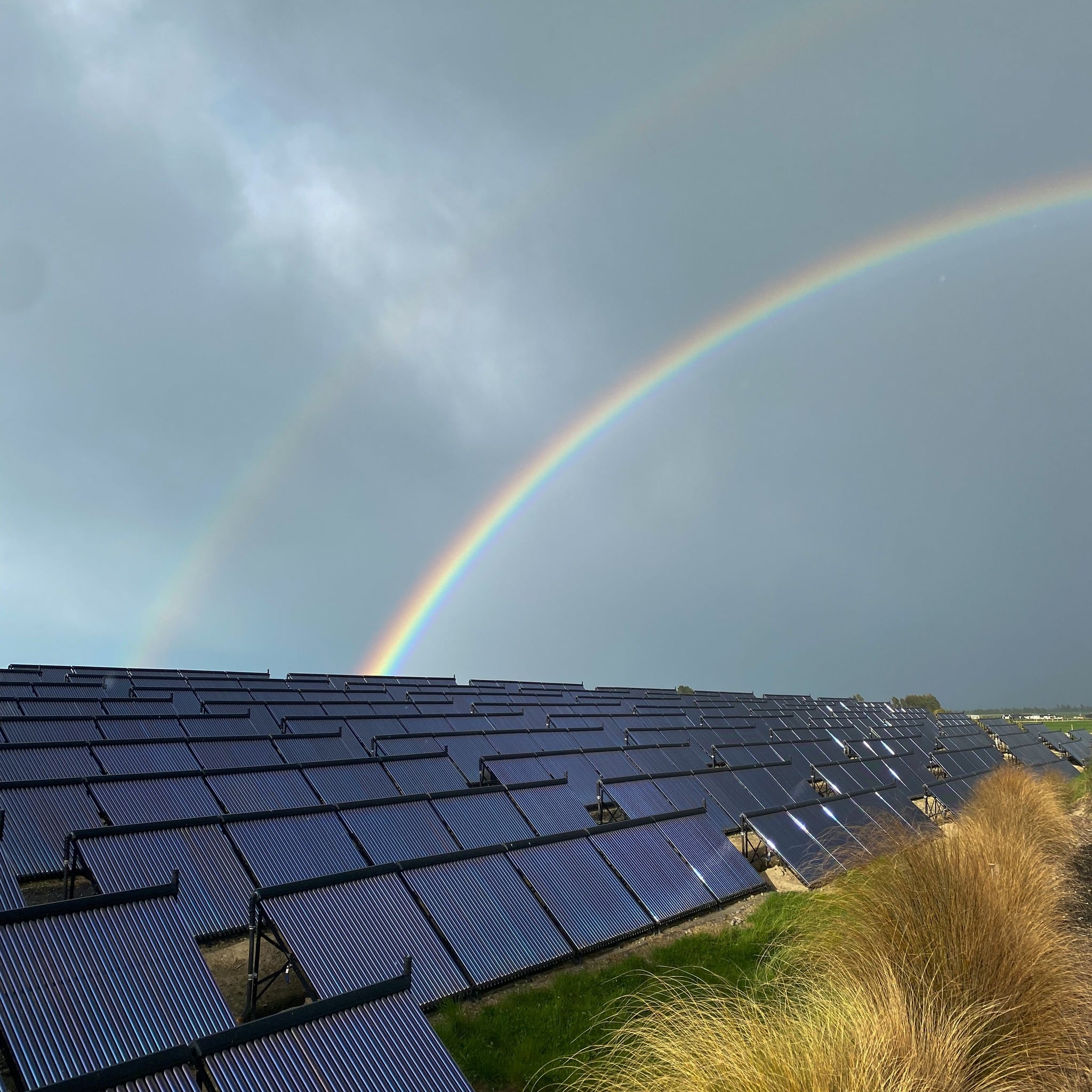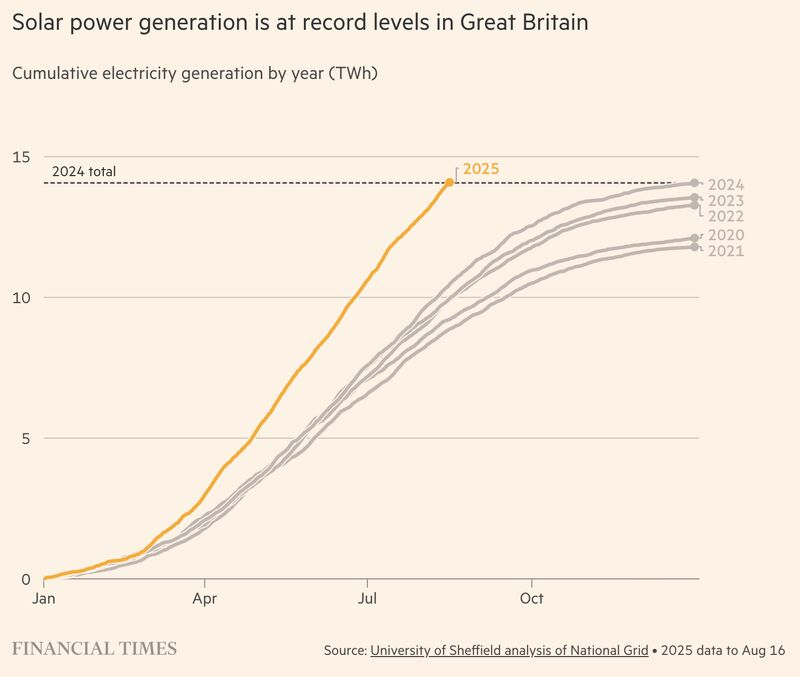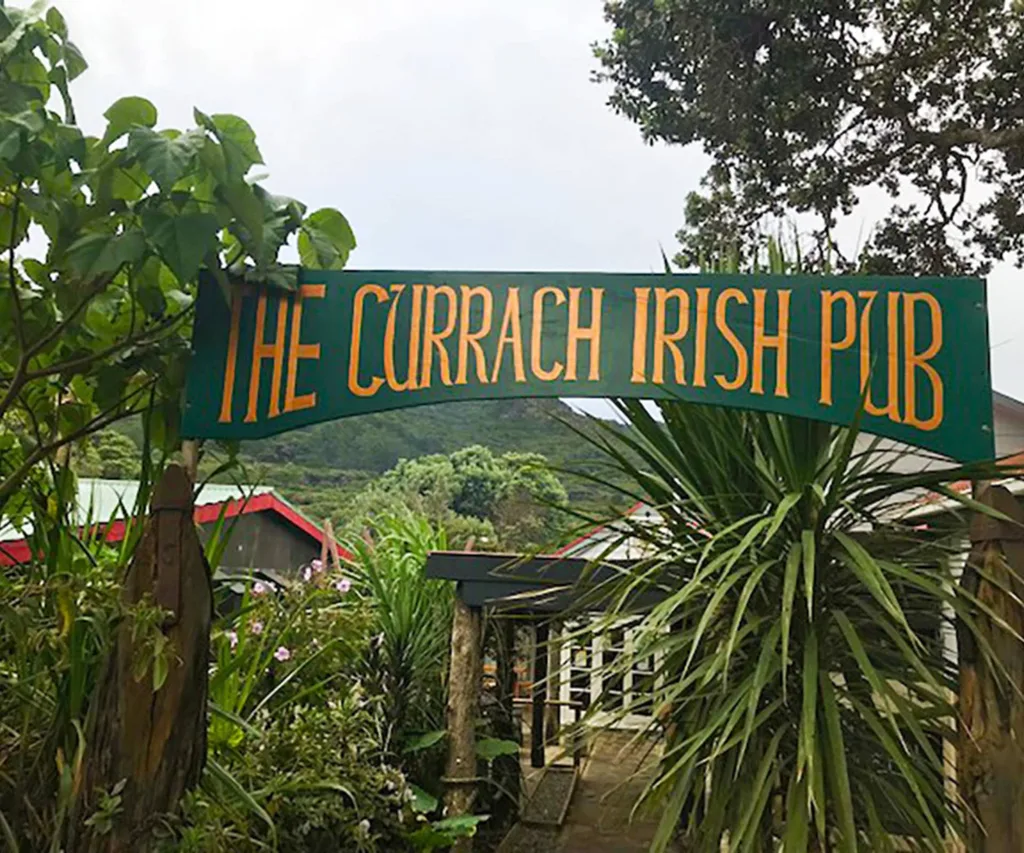Up the Kilowahs! Checkout the EDB Scoreboard



Batteries are helping to avoid black outs overseas and they're competing with quite big power sources in New Zealand, too; four school pools on the East Coast are now running on the sun, while massive gas bills make Hutt City Council's decision to go electric smart and Ōpuke Spa in Methven relies on solar tubes that provide the equivalent of 500 electric jugs; the story behind what the owner of The Currach on the off-grid Aotea Great Barrier Island calls world's first solar-powered Irish pub; Mint Innovation gets a big bite of the UK's mineral recycling cherry; and pain meets poetry as an electricity bill is read in the style of William Faulkner.

All for one, and one for all
A fire might keep you warm if the grid goes down, but solar and batteries can keep the essentials running. And they can also help the rest of the grid avoid or limit black outs.
In places like Puerto Rico, where a network of old fossil fuel power plants is always teetering on the brink of failure, home batteries are playing an important role.
As the Washington Post story said:
“A network of 69,000 home batteries can generate as much electricity as a small natural gas turbine during an emergency, temporarily covering about 2 percent of the island’s energy needs when things go wrong. For a system that’s always in crisis mode, that buffer can make a big difference. LUMA, which through agreements with homeowners can use stored power in emergencies, has already called in the backup batteries 30 times this year to ease shortages.
“It has very, very certainly prevented more widespread outages,” said Daniel Haughton, LUMA’s transmission and distribution planning director. “In the instances that we had to [cut power], it was for a much shorter duration: A four-hour outage became a one- or two-hour outage.”
Puerto Rico’s experience offers a glimpse into the future for the rest of the United States, where batteries are starting to play a big role in keeping the lights on. Authorities in Texas, California and New England have credited home batteries with preventing blackouts during summer energy crunches.
In New Zealand, our peak times generally for winter heating rather than summer cooling and black outs are pretty rare, but demand for electricity is expected to increase in the coming years. All the infrastructure is built to deal with peaks, which is very expensive, and fossil fuels are more likely to be used at peak times.
Batteries basically remove their owners from peak and could potentially remove their neighbours from peak, too. According to EA data, there are around 80MW of distributed batteries in the country at the moment and this likely understates the true number, as EDBs were not required to backdate the information disclosure when the new requirements came into force in 2023.
For context, 80MW is about the same capacity as Mercury's Aratiatia and Atiamuri hydro stations on the Waikato river, or their $480M Ngatamariki geothermal power station. At the current rate of growth (40MW per year), distributed batteries will reach 280MW by 2030, which will make Kiwi household and business batteries the 11th largest power station in New Zealand by capacity.
Of course, with battery prices coming down, there is every chance the rate of installation and/or the average size of battery (currently 7kW) will increase. And, as we’ve seen in Australia, where over 1,000 batteries are being installed every day, incentives can increase uptake and system size considerably.
As solar power continues to boom around the world, storage is becoming a key ingredient.

Sun smart
Pools, many of which are still heated using increasingly expensive gas, are an absolute sitter for solar, battery and electric hot water systems. And every school in New Zealand should be benefitting from the savings solar offers. So it’s great to see that four schools along the East Coast have been upgraded as part of a $3.5m school pool heating and resilience project funded by Trust Tairāwhiti.
As the Trust explained:
The project included Te Waha o Rerekohu Area School in Te Araroa, Te Kura Kaupapa Māori o te Waiu o Ngāti Porou in Ruatōria, Hatea-a-Rangi in Tokomaru Bay and Tolaga Bay Area School.
Initially aimed at extending the swimming season for tamariki, the project evolved to incorporate off-grid battery storage, improving electricity resilience. With battery storage now established, schools can remain operational during power outages for at least ten days, providing essential support for remote communities where schools often serve as emergency hubs.
“It’s a game changer having the heat pump powered by solar energy. We don’t have to put a time limit on when students can go swimming. The pool cover and heat pump will extend our season considerably,” says Nori Parata, Tolaga Bay Area School principal.
The Trust partnered with Our Energy, a company that enables communities to share and trade locally produced clean electricity, to help deliver a distributed energy kaupapa to the communities through this project.
“Further down the track, we know we’ll generate more than we can use. It is certainly our intention to find opportunities to share that energy.
This project received the Social Procurement Award at the 2025 New Zealand Energy Excellence Awards, recognising the work of Trust Tairāwhiti and Seven Rivers.
Pool politics
When it comes to public pools, the smart councils are doing what they can to get off gas because the cost increases are unsustainable. Whanganui District Council chief executive David Langford told The Herald the council’s gas bill had gone up between 80% and 90% - “a $800,000 increase across the board” and residents were going to have to pay extra to cover the cost of running the pools.
Hutt City Council, one of the more progressive councils when it comes to electrification, says the recently built Te Ngaengae Pool is New Zealand’s most sustainable pool.
The old Naenae Pool, which closed in 2019, produced 546 tonnes of carbon emissions each year from its electricity and gas-powered pool heating and ventilation systems - the equivalent emissions of driving 3.28 million kilometres in a diesel car.
Emissions from energy usage at the new pool will be slashed by 56%, and energy use intensity will reduce by 53%.
The innovative design and efficiency measures include heat pumps for heating water, LED lighting, insulation, and ways to manage temperature and humidity. This will see the total energy usage reduce by 22% when compared to the old complex, despite the building’s footprint being more than 60% larger.
Council agreed in 2021 to phase out the use of fossil gas and has since swapped the gas heating plant at Eastbourne Pool and McKenzie Baths with heat pumps. Huia will also be upgraded over the next few months, with gas boilers swapped with heat pumps and Stokes Valley and Wainuiomata pools are scheduled for decarbonisation later this decade.
You’re soaking in it
At the other end of the pool spectrum, Methven’s Ōpuke Spa produces around one MW every day through its solar tube system.

As it says, its solar field is the equivalent of 500 electric jugs running at the same time. And when it needs more juice, it’s got a back up heat pump system.
Home alone
Women’s Weekly isn’t a regular source for the Rewiring gang, but a recent story about The Currach on Great Barrier Island piqued our interest.

“It’s not just the atmosphere that makes The Currach unique – Orla [Cumisky] believes it’s the only fully solar-powered Irish pub in the world. Great Barrier Island isn’t connected to the main power grid.
When Orla Cumisky took over the pub in 2020, one of her goals was to reduce the pub’s reliance on fuel generated energy. Faced with the minor obstacle of no space to set up the required solar panel array, she approached the neighbour over the fence, Peter Blackwell, and presented a proposition. Could he supply the pub with 24/7 renewable power?
As a fourth generation Blackwell, and having spent his lifetime connected to the island, Peter felt it was a natural consideration to be driving towards generating green energy; and shutting down the noisy fuel-guzzling, carbon-emitting generators running 16 hours a day over the fence would be a huge bonus.
With the goal to generate 200kWh per day and a sustainable business model, Peter designed and developed a 50kW solar system. He has installed an impressive 150 solar panels, lithium-ion batteries, and inverter system, and began supplying the pub power over the fence.
The Currach complex has run on 98% solar power over the past year and slashed its power costs in half. The obvious reduction is carbon emissions and generator noise were to be expected, what wasn’t expected was the impact that 24/7 uninterrupted power would have on all the Currach’s facilities and systems.
The pub is set to appear in a new TV series hosted by George Clarke called Homes in the Wild, along with other off-grid homes in New Zealand and Australia (Rewiring was actually asked for suggestions by the production company last year). We still advocate to remain connected to the grid if possible because homes with solar and batteries can play a role in the wider energy system, but when there’s no other option, examples like this show how well the technology works
Mint slice
An electrified future is a more circular and recyclable future. And Auckland company Mint Innovation has led that charge with its technology, which is able to extract valuable material from what is often seen as waste.
Its tech has obviously been noticed because the company was recently announced as part of a consortium to recycle EV batteries for Jaguar Land Rover.
As the Herald reported:
Mint Innovation, along with LiBatt Recycling and Warwick University, has been allocated £8.1m ($17.9m) for a plant in the West Midlands.
The project will develop technology to extract lithium, nickel and cobalt from used batteries, which typically account for a third of the cost of a new EV, but gradually degrade in recharge efficiency over time (Tesla batteries, for example, have an 8-year warranty, with “minimum” 70% capacity retention over the period) and are toxic in a scrapheap.
It’s part of the UK Government’s £2.5 billion “Drive35″ programme to support a transition to electric cars by 2035 and boost local manufacturing.
See how they refine the lithium in the video below.
Poetic pain
We’re suckers for a bit of poetry and this rough comedic diamond’s take on his large electricity bill is a thing of beauty.

How the sun led to higher salaries for teachers in the US and why this should be happening here, too; how "the once-rigid link between economic growth and carbon emissions is breaking across the vast majority of the world" as electrification gives more countries a productivity boost (and how that would allow New Zealand to keep embracing our long, languid summer break); solar continues to weather storms and provide 'free resilience'; Dunedin laundry company Preens goes electric and saves over 300 utes worth of emissions; the company that wants you to drink diesel exhaust; and a wonderful rundown of the Kill Bills tour - and the national electrification opportunity - from one of the tour sponsors.
Read moreDownload
As gas supplies decline and prices rise, electrification is the best bet, but it's hard for big businesses without government support. Kirsty Johnston talks to Rainbow Nurseries about how it made the switch with help from a grant, and others who are unsure they will be able to keep getting gas. As one busines owner said: "We never considered the risk to the business of not actually having natural gas," one participant said. "We always expect that the price could fluctuate… But we never anticipated maybe having no gas coming from the pipeline." There are ways for the Government to help. And there is a huge amount of new renewable electricity coming on stream, so there won't be a shortage of electrons.
Read moreDownload
Marc Daalder reports on Vector's declining gas network and how it is responding to falling customer numbers. As he writes: "Gas in Auckland is formally past its peak in the latest forecasts from Vector, the city’s only gas distribution business, with new connections set to fall to zero in three years ... From 2029, there would be no new residential or commercial connections – with new industrial connections projected to have already ceased this year."
Read moreDownload